Influence of Acoustic Black Hole Array Embedded in a Plate on Its Energy Propagation and Sound Radiation
Abstract
:1. Introduction
2. Modeling and Simulation Analysis of Plate Embedded with Two-Dimensional ABH Array
2.1. Finite Element Model of Plate Embedded with ABH Array
2.2. Energy Focalization Analysis of Different ABH Configurations
2.3. Analysis of Energy Propagation in Plate Embedded with ABH Array
2.4. Quantitative Analysis of Energy Focalization in the Plate with ABH Array
3. Effect of Damping Layers in ABH Array on Energy Dissipation and Sound Radiation of Plate
3.1. FE Model of Plate Embedded with ABH Array with Damping Layers
3.2. Energy Dissipation in Plate Embedded with ABH Array with Damping Layers
3.3. Sound Radiation of Plate Embedded with ABH Array with Damping Layers
4. Conclusions
- (1)
- In the low frequency range of 50–180 Hz, plate embedded with the ABH array has a better energy-gathering performance than the plates embedded with a large ABH or a single ABH.
- (2)
- For the plate embedded with five ABHs in this paper, the power flow density at the ABH central area is much higher than that of other areas. However, under certain excitation force, the energy focalization effect of the plate embedded with the ABH array is related to the positions of ABH pits.
- (3)
- The average vibration power density ratios at different circular sections in ABH are greater than 1, and the maximum value can reach hundreds when excitation frequency is near the natural frequency of plate, which indicates a significant energy focalization effect. In addition, the energy focalization effect is not obvious when the radius of the circular section is larger than 0.03 m, which provides a reference for using damping layers more effectively.
- (4)
- For the ABH plate in this paper, damping materials can change the plate energy distribution in the frequency domain and reduce the frequency where ABH starts to work. Results also show that the uniform damping layers have a better energy dissipation effect than varying thickness damping layers.
- (5)
- The radiated sound power level of the ABH plate with damping layers is reduced by 1–4dB compared with the ABH plate without damping layers.
Author Contributions
Funding
Institutional Review Board Statement
Informed Consent Statement
Data Availability Statement
Acknowledgments
Conflicts of Interest
Appendix A


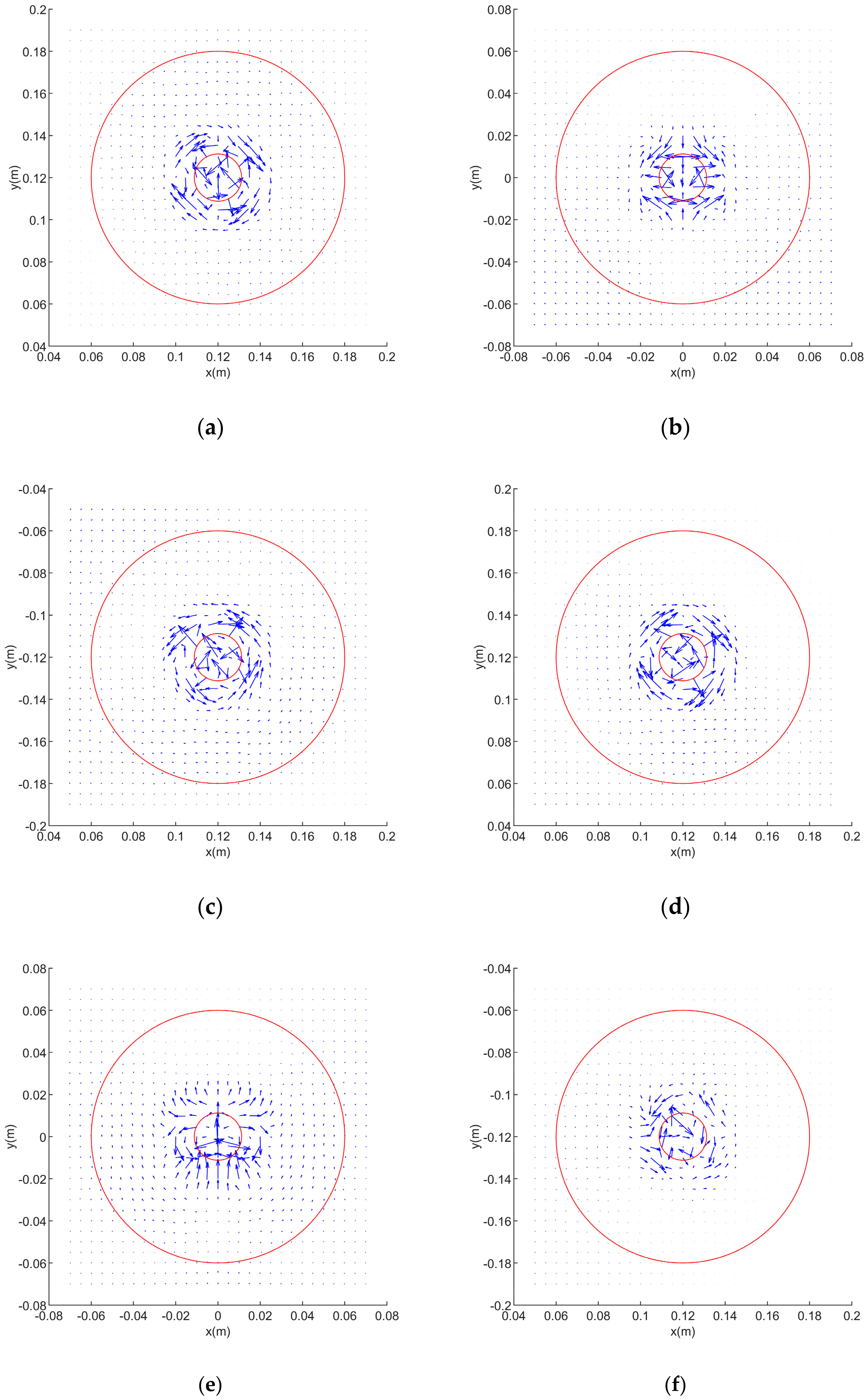
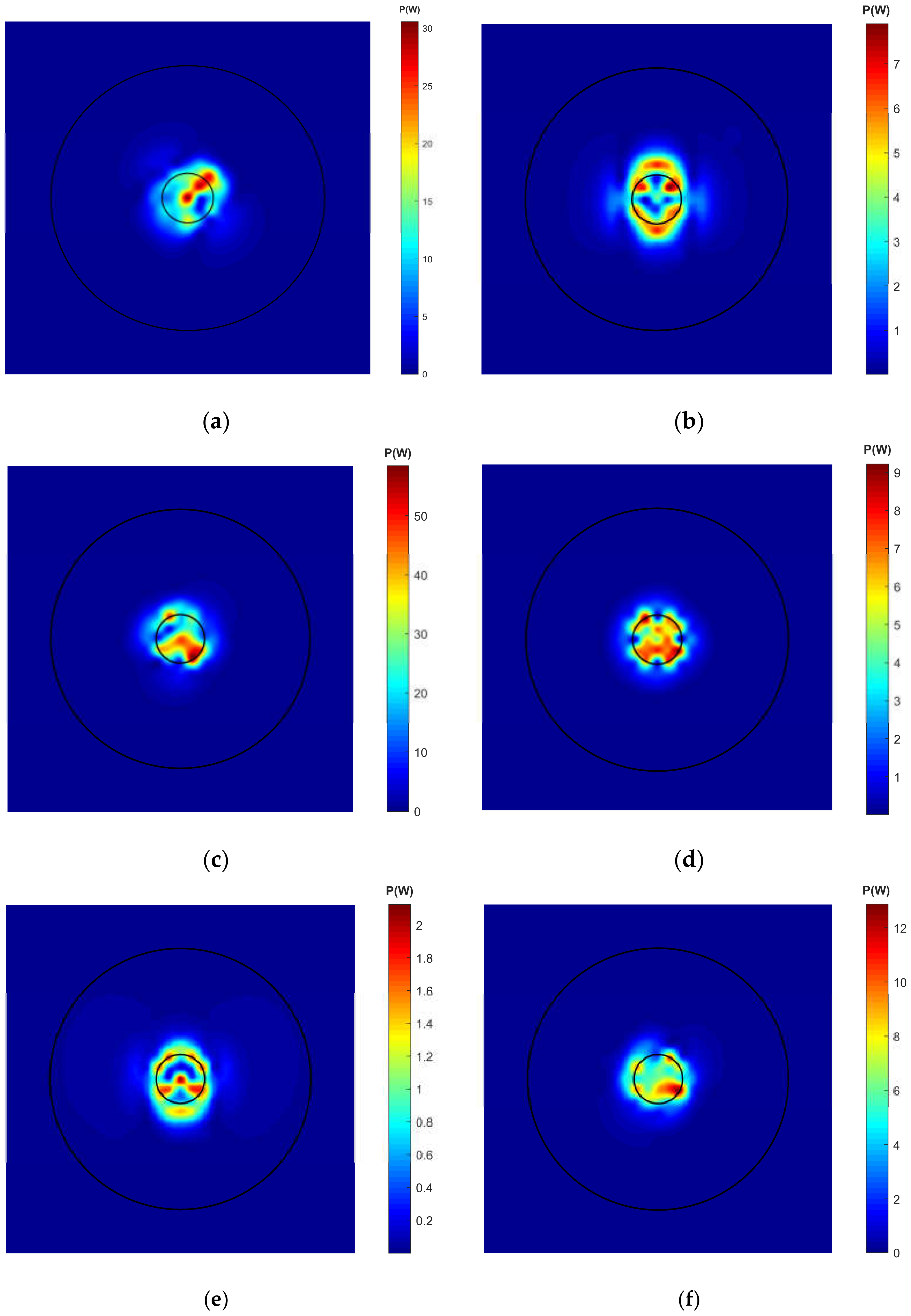
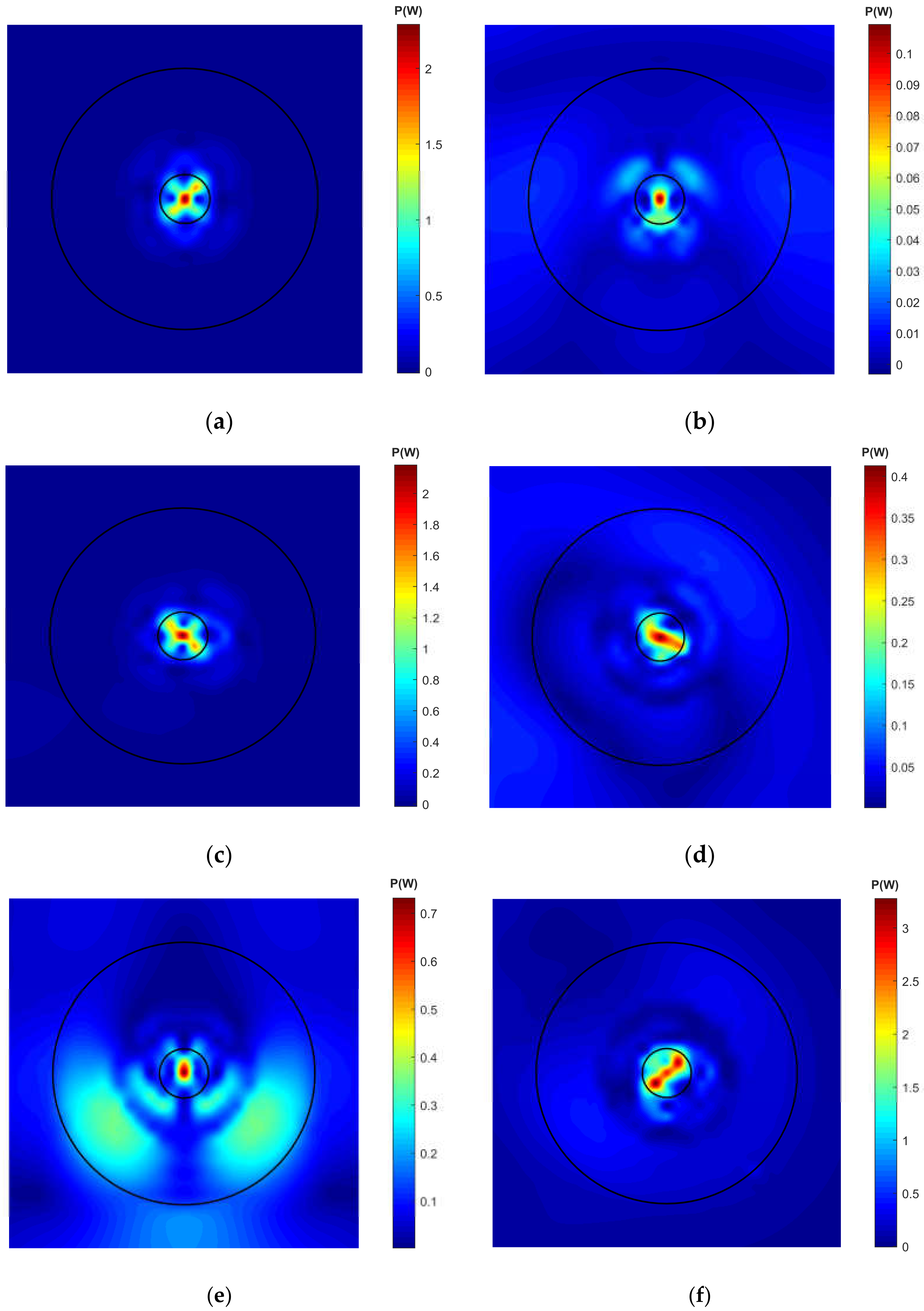



References
- Pelat, A.; Gautier, F.; Conlon, S.C.; Semperlotti, F. The acoustic black hole: A review of theory and applications. J. Sound Vib. 2020, 476, 115316. [Google Scholar] [CrossRef]
- Mironov, M.A. Propagation of a flexural wave in a plate whose thick-ness decreases smoothly to zero in a finite interval. Sov. Phys.-Acoust. 1988, 34, 318–319. [Google Scholar]
- Krylov, V.V. New type of vibration dampers utilizing the effect of acoustic ‘black holes’. Acta Acust. United Acust. 2004, 90, 830–837. [Google Scholar]
- Krylov, V.V.; Tilman, F.J.B.S. Acoustic ‘black holes’ for flexural waves as effective vibration dampers. J. Sound Vib. 2004, 274, 605–619. [Google Scholar] [CrossRef]
- Krylov, V.V.; Winward, R. Experimental investigation of the acoustic black hole effect for flexural waves in tapered plates. J. Sound Vib. 2007, 300, 43–49. [Google Scholar] [CrossRef] [Green Version]
- Conlon, S.C.; Fahnline, J.B.; Semperlotti, F. Numerical analysis of the vibroacoustic properties of plates with embedded grids of acoustic black holes. J. Acoust. Soc. Am. 2015, 137, 447–457. [Google Scholar] [CrossRef] [PubMed]
- Li, X.; Ding, Q. Sound radiation of a beam with a wedge-shaped edge embedding acoustic black hole feature. J. Sound Vib. 2019, 439, 287–299. [Google Scholar] [CrossRef]
- Yan, S.; Lomonosov, A.M.; Shen, Z. Numerical and experimental study of Lamb wave propagation in a two-dimensional acoustic black hole. J. Appl. Phys. 2016, 119, 214902. [Google Scholar] [CrossRef]
- Krylov, V.V. Propagation of plate bending waves in the vicinity of one- and two-dimensional acoustic black hole. In Proceedings of the First International ECCOMAS Thematic Conference on Computational Methods in Structural Dynamics and Earthquake Engineering, Rethymno, Greece, 13–15 June 2007. [Google Scholar]
- O’Boy, D.J.; Krylov, V.V. Damping of flexural vibrations in circular plates with tapered central holes. J. Sound Vib. 2011, 330, 2220–2236. [Google Scholar] [CrossRef] [Green Version]
- O’Boy, D.J.; Krylov, V.V.; Kralovic, V. Damping of flexural vibrations in rectangular plates using the acoustic black hole effect. J. Sound Vib. 2010, 329, 4672–4688. [Google Scholar] [CrossRef] [Green Version]
- Huang, W.; Ji, H.; Qiu, J.; Cheng, L. Analysis of ray trajectories of flexural waves propagating over generalized acoustic black hole indentations. J. Sound Vib. 2018, 417, 216–226. [Google Scholar] [CrossRef]
- Conlon, S.C.; Fahnline, J.B.; Shepherd, M.R.; Feurtado, P.A. Vibration control using grids of Acoustic Black Holes: How many is enough. In Proceedings of the 44th International Congress and Exposition on Noise Control Engineering, INTER-NOISE 2015, San Francisco, CA, USA, 9–12 August 2015. [Google Scholar]
- Conlon, S.C.; Fahnline, J.B.; Semperlotti, F.; Feurtado, P.A. Enhancing the low frequency vibration reduction performance of plates with embedded acoustic black holes. In Proceedings of the 43rd International Congress on Noise Control Engineering, INTER-NOISE 2014, Melbourne, Australia, 16–19 November 2014. [Google Scholar]
- Huang, W.; Ji, H.; Qiu, J.; Cheng, L. Wave energy focalization in a plate with imperfect two-dimensional acoustic black hole indentation. ASME J. Vib. Acoust. 2016, 138, 061004. [Google Scholar] [CrossRef]
- Prill, O.; Roos, C.; Bush, R. Finite element simulations of acoustic black holes as lightweight damping treatments for automotive body panels with application to full vehicle interior wind noise predictions. In Proceedings of the INTER-NOISE and NOISE-CON Congress and Conference Proceedings, InterNoise16, Hamburg, Germany, 21–24 August 2016. [Google Scholar]
- Weisser, T.; Foltête, E.; Bouhaddi, N.; Gonidou, L.O. A power flow mode approach dedicated to structural interface dynamic characterization. J. Sound Vib. 2015, 334, 202–218. [Google Scholar] [CrossRef] [Green Version]
- Wu, W.; Yin, X.; Li, H.; Zhong, K. Power flow analysis of built-up plate structures using the dynamic stiffness method. J. Vib. Control 2018, 24, 2815–2831. [Google Scholar] [CrossRef]
- Stephen, A.H.; Richard, P.S. Predictions of structural intensity fields using solid finite elements. Noise Control Eng. 1999, 47, 209–217. [Google Scholar]
- Wang, X.R.; Liu, X.; Tai, J.; He, T.; Shan, Y. A novel method of reducing the acoustic emission wave reflected by boundary based on acoustic black hole. Ultrasonics 2019, 94, 292–304. [Google Scholar] [CrossRef] [PubMed]
- Krylov, V.V. Overview of localised flexural waves in wedges of power-law profile and comments on their relationship with the acoustic black hole effect. J. Sound Vib. 2020, 468, 115100. [Google Scholar] [CrossRef] [Green Version]
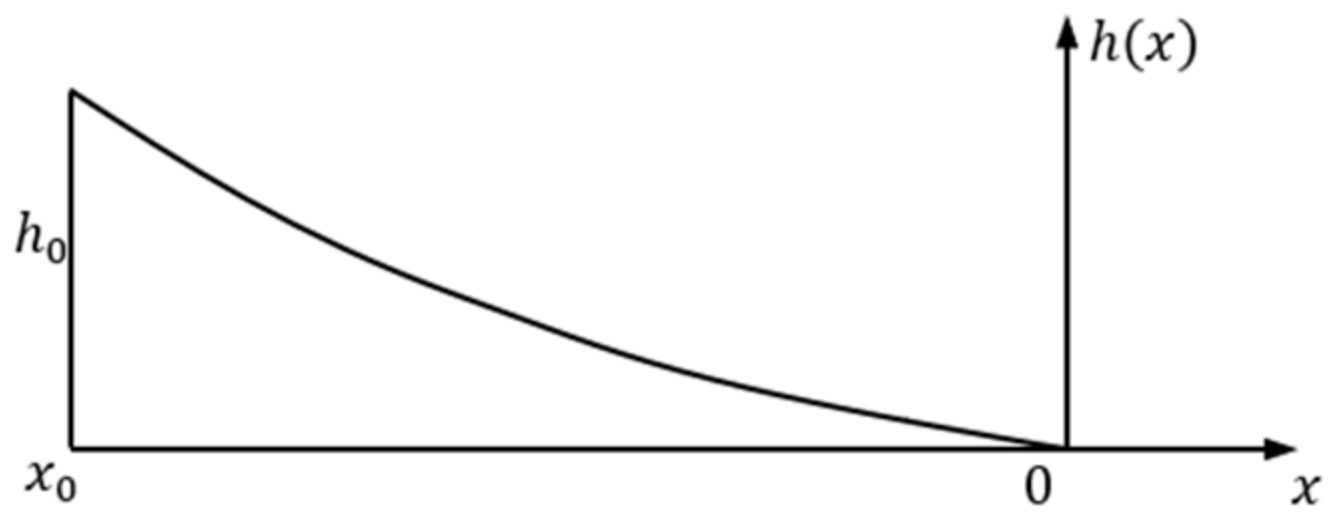




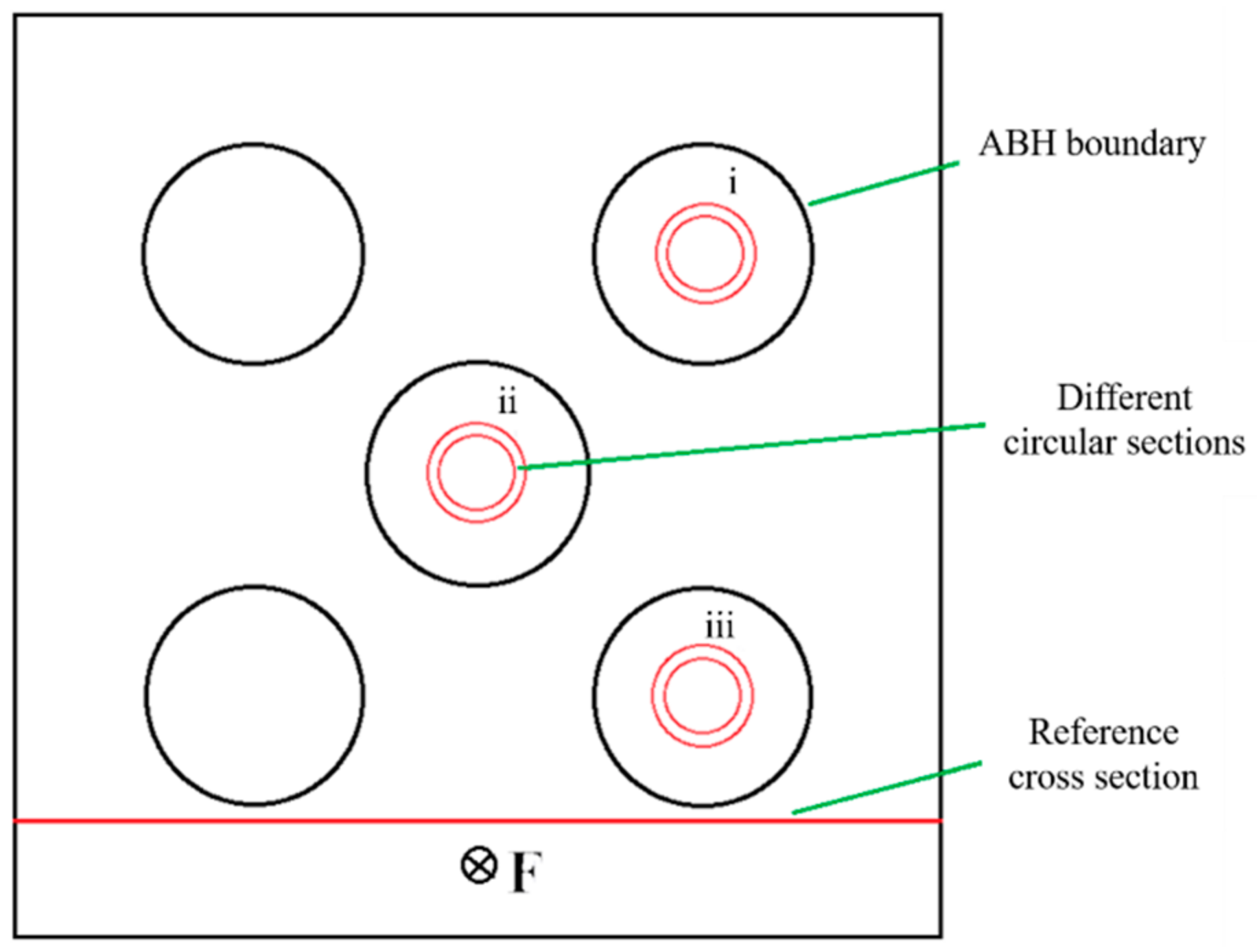
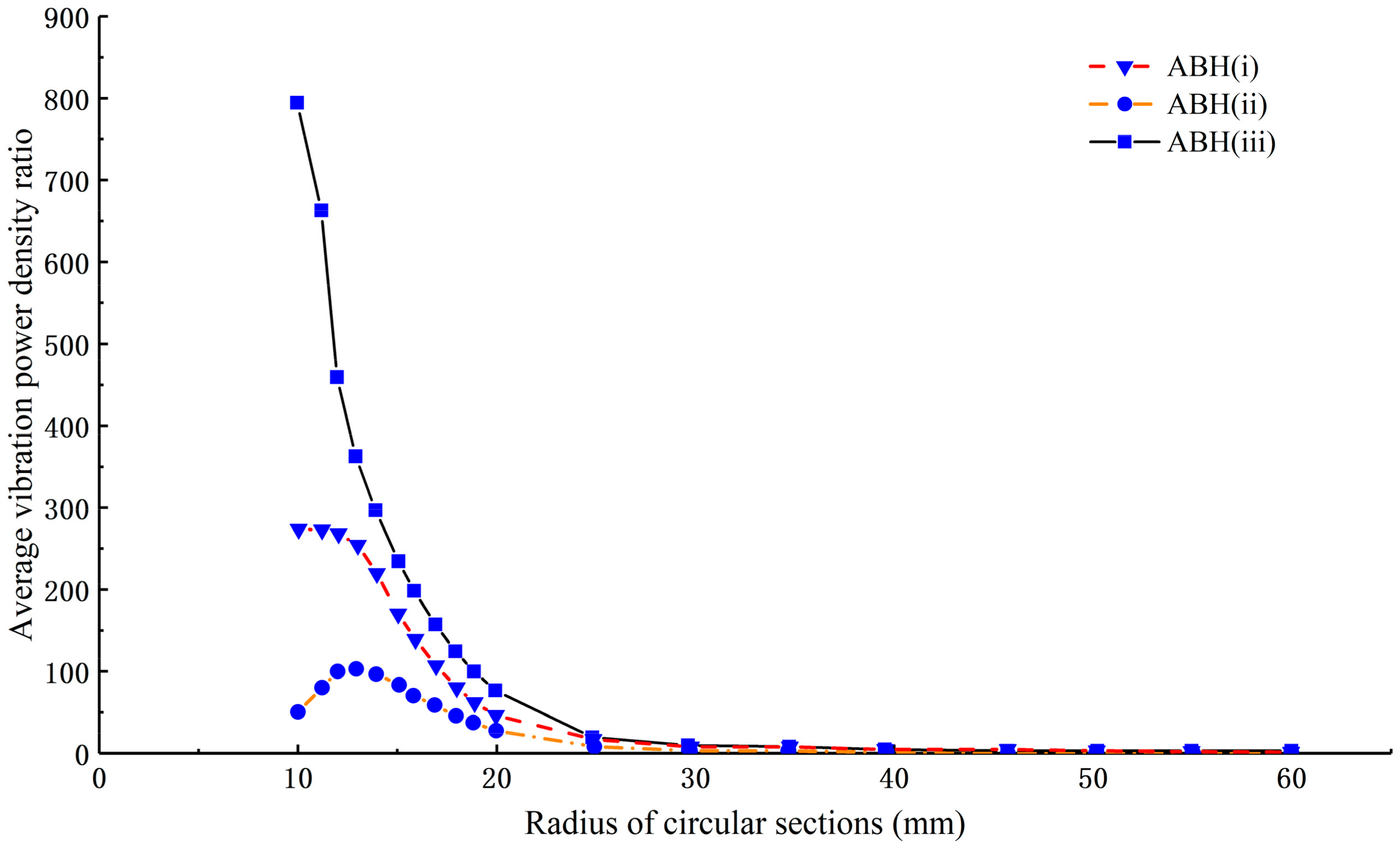

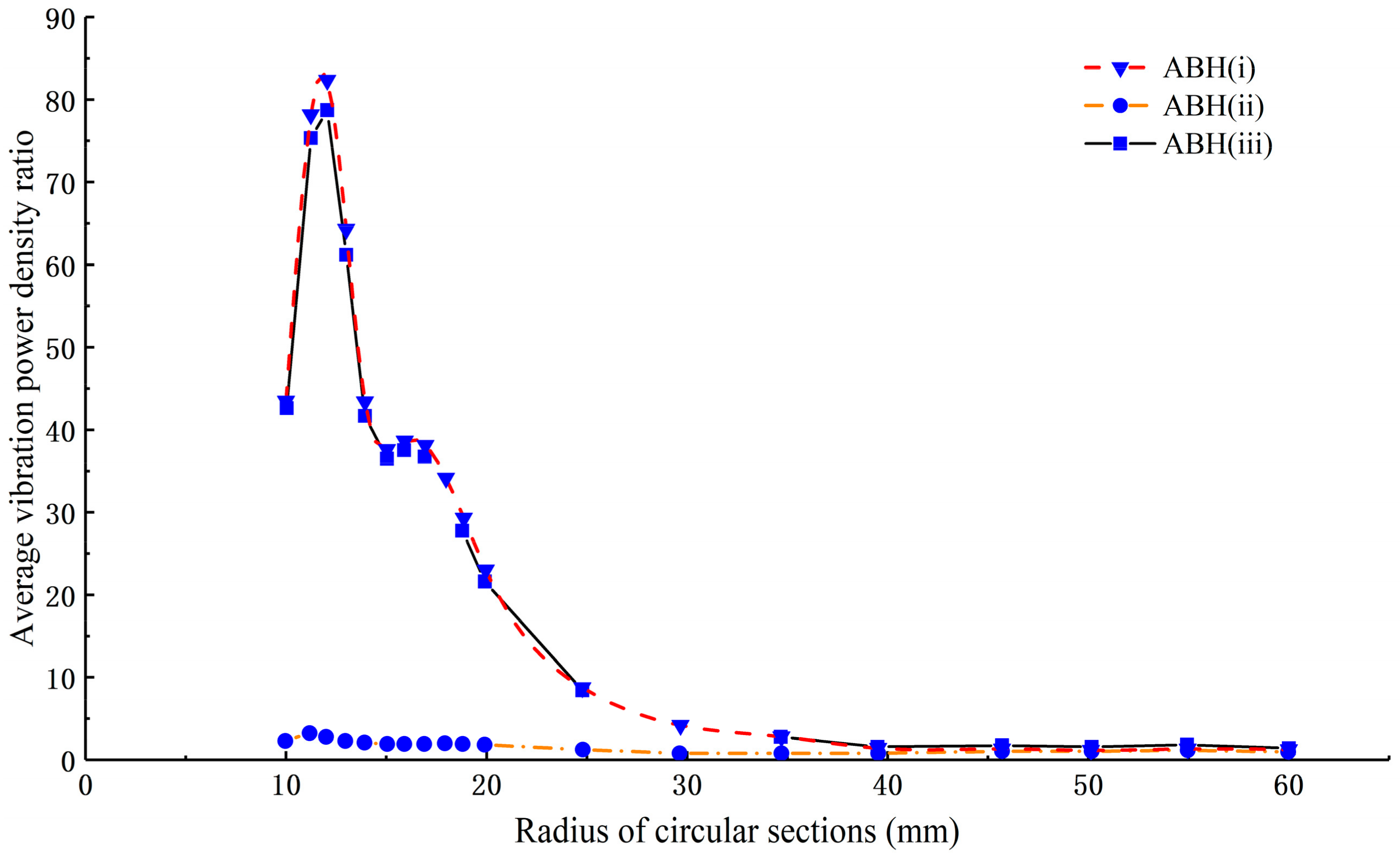
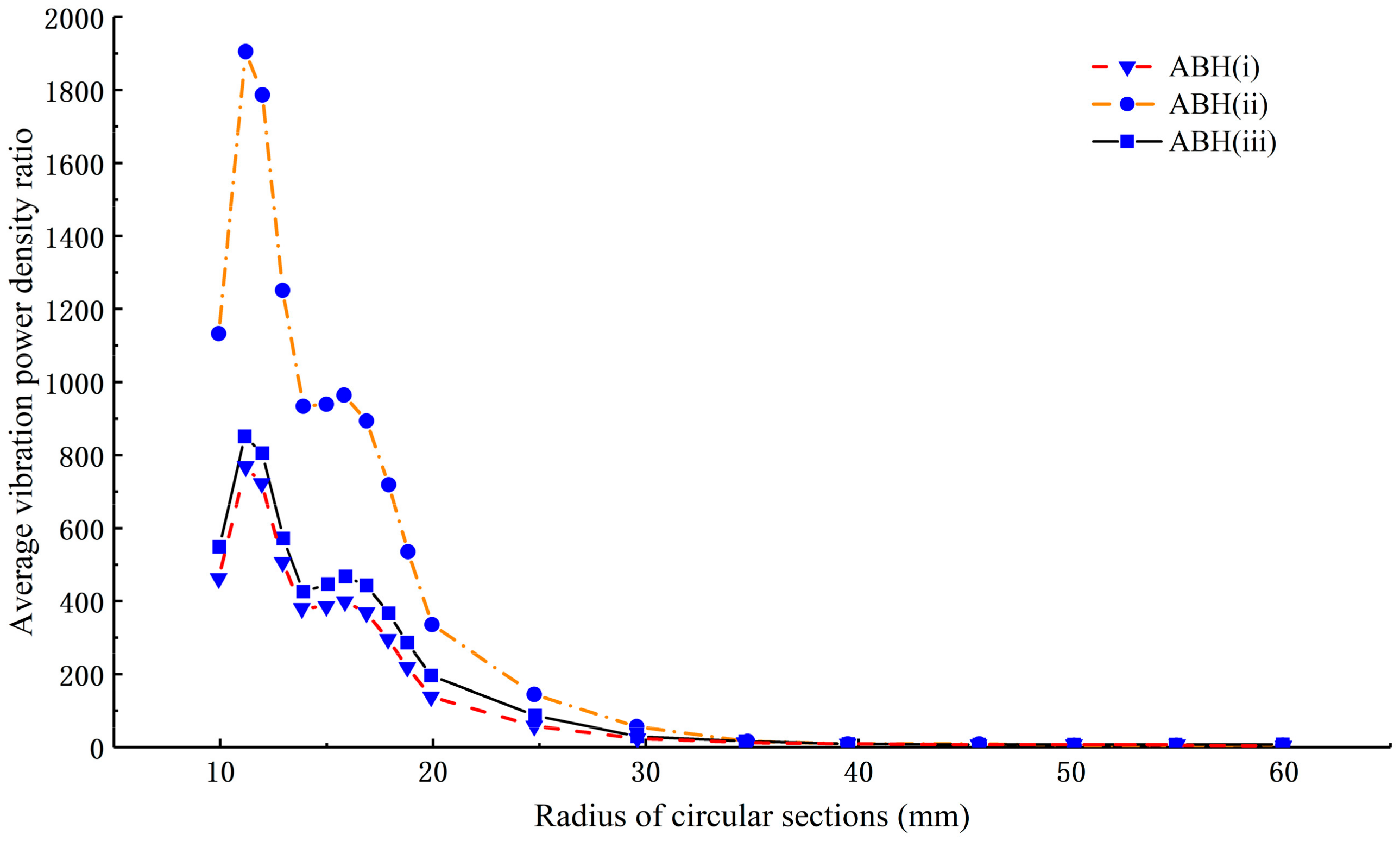
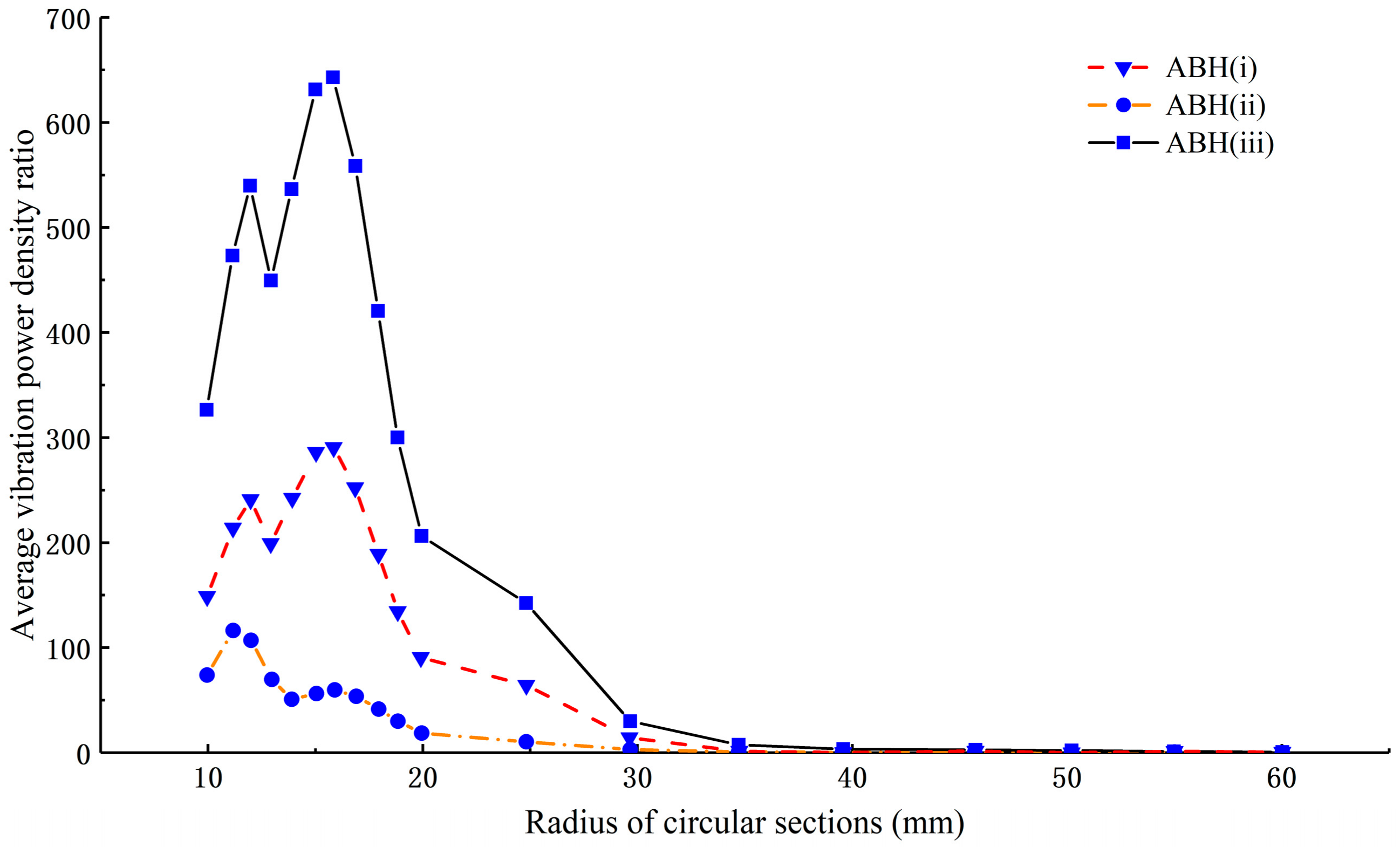

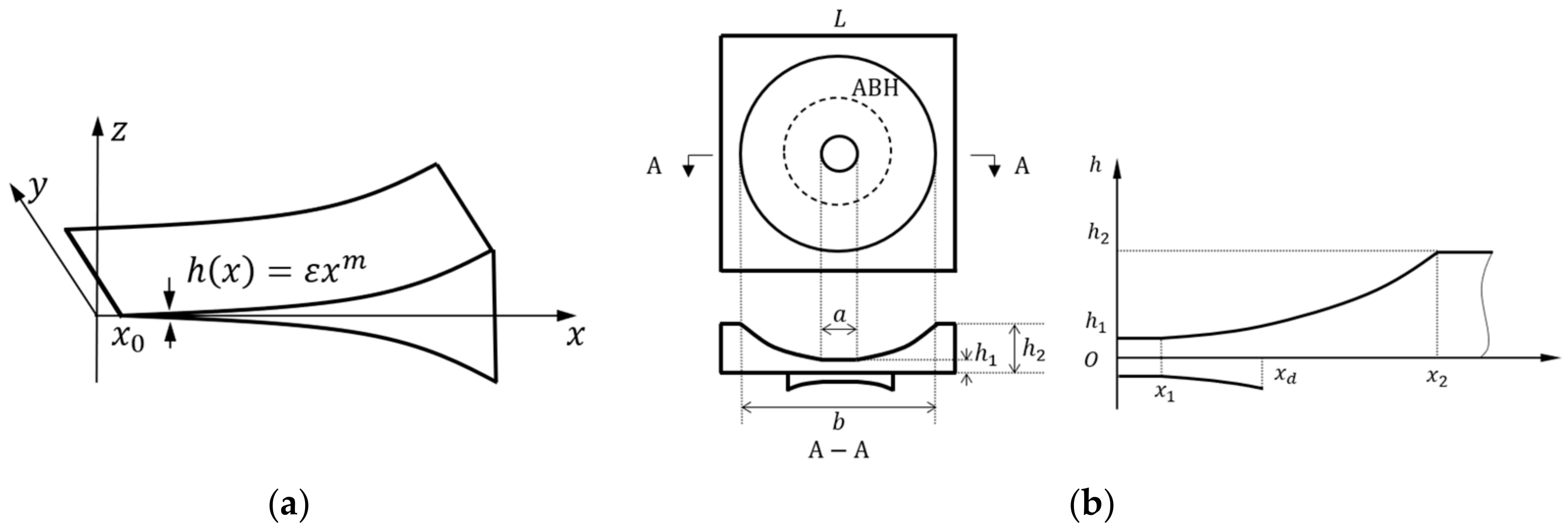


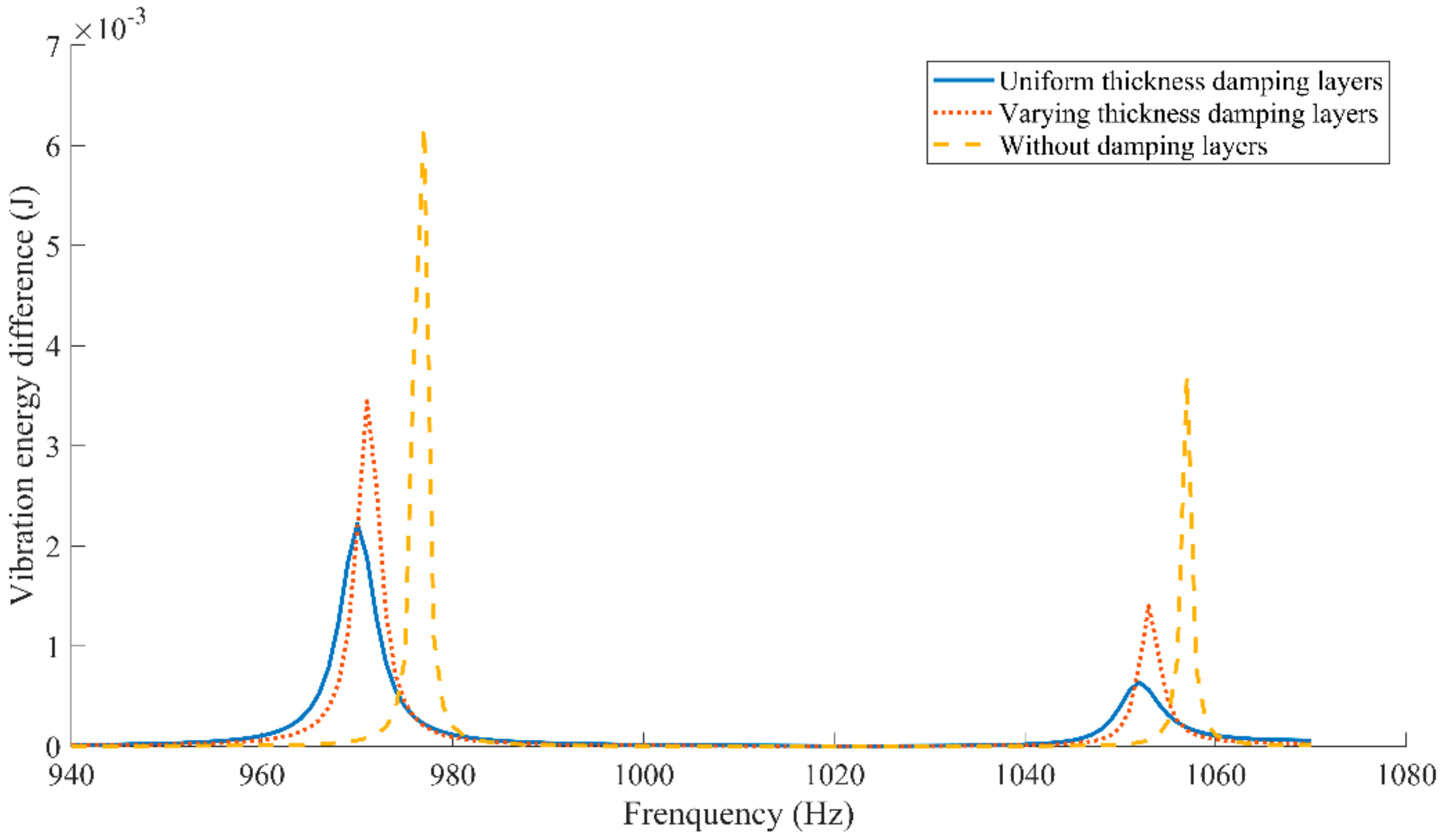

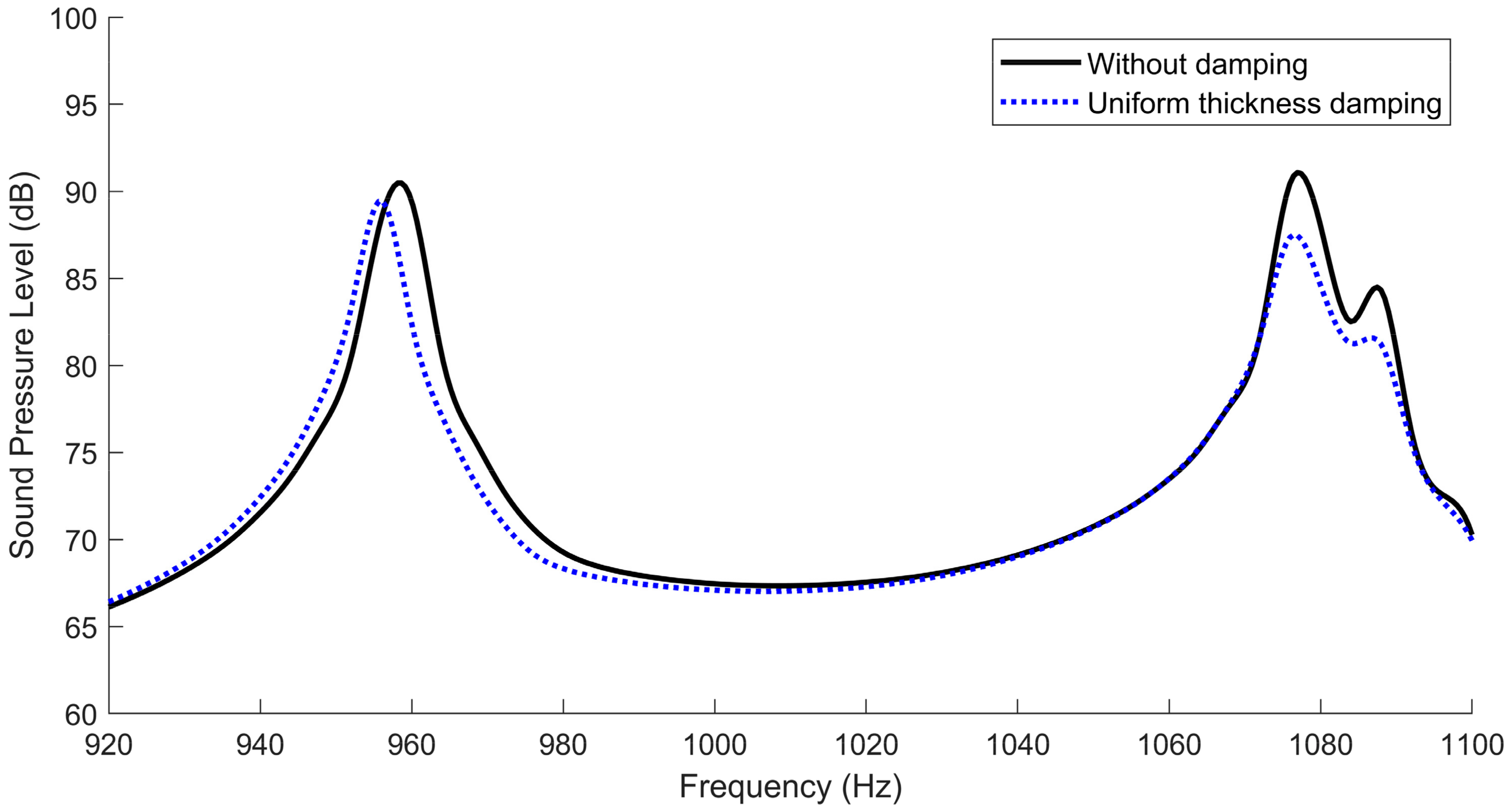
| Parameter | ||||
|---|---|---|---|---|
| Small ABH | 0.0001 | 0.004 | 0.06 | |
| Big ABH | 0.0001 | 0.004 | 0.1342 |
| Parameter | ||||
|---|---|---|---|---|
| Value | 2710 | 75 | 0.3135 | 0.01 |
| Parameter | [] | [] | Loss Factor | |
|---|---|---|---|---|
| Value | 950 | 5.0 | 0.3 | 0.3 |
Publisher’s Note: MDPI stays neutral with regard to jurisdictional claims in published maps and institutional affiliations. |
© 2022 by the authors. Licensee MDPI, Basel, Switzerland. This article is an open access article distributed under the terms and conditions of the Creative Commons Attribution (CC BY) license (https://creativecommons.org/licenses/by/4.0/).
Share and Cite
Liang, H.; Liu, X.; Yuan, J.; Bao, Y.; Shan, Y.; He, T. Influence of Acoustic Black Hole Array Embedded in a Plate on Its Energy Propagation and Sound Radiation. Appl. Sci. 2022, 12, 1325. https://doi.org/10.3390/app12031325
Liang H, Liu X, Yuan J, Bao Y, Shan Y, He T. Influence of Acoustic Black Hole Array Embedded in a Plate on Its Energy Propagation and Sound Radiation. Applied Sciences. 2022; 12(3):1325. https://doi.org/10.3390/app12031325
Chicago/Turabian StyleLiang, Haoming, Xiandong Liu, Jiakai Yuan, Yue Bao, Yingchun Shan, and Tian He. 2022. "Influence of Acoustic Black Hole Array Embedded in a Plate on Its Energy Propagation and Sound Radiation" Applied Sciences 12, no. 3: 1325. https://doi.org/10.3390/app12031325





